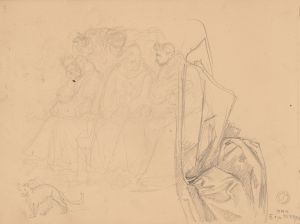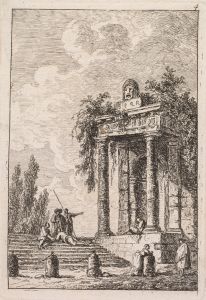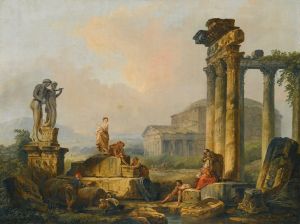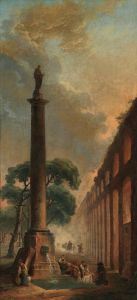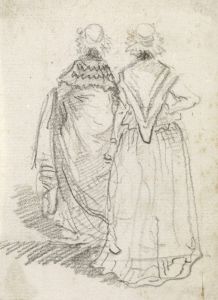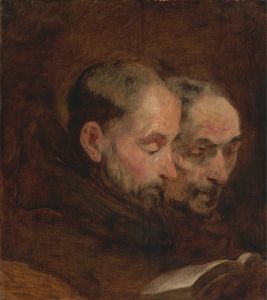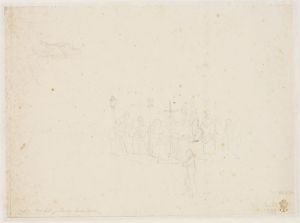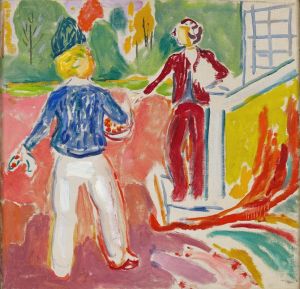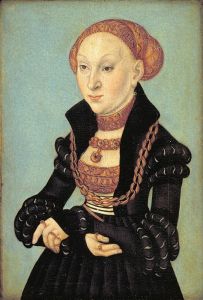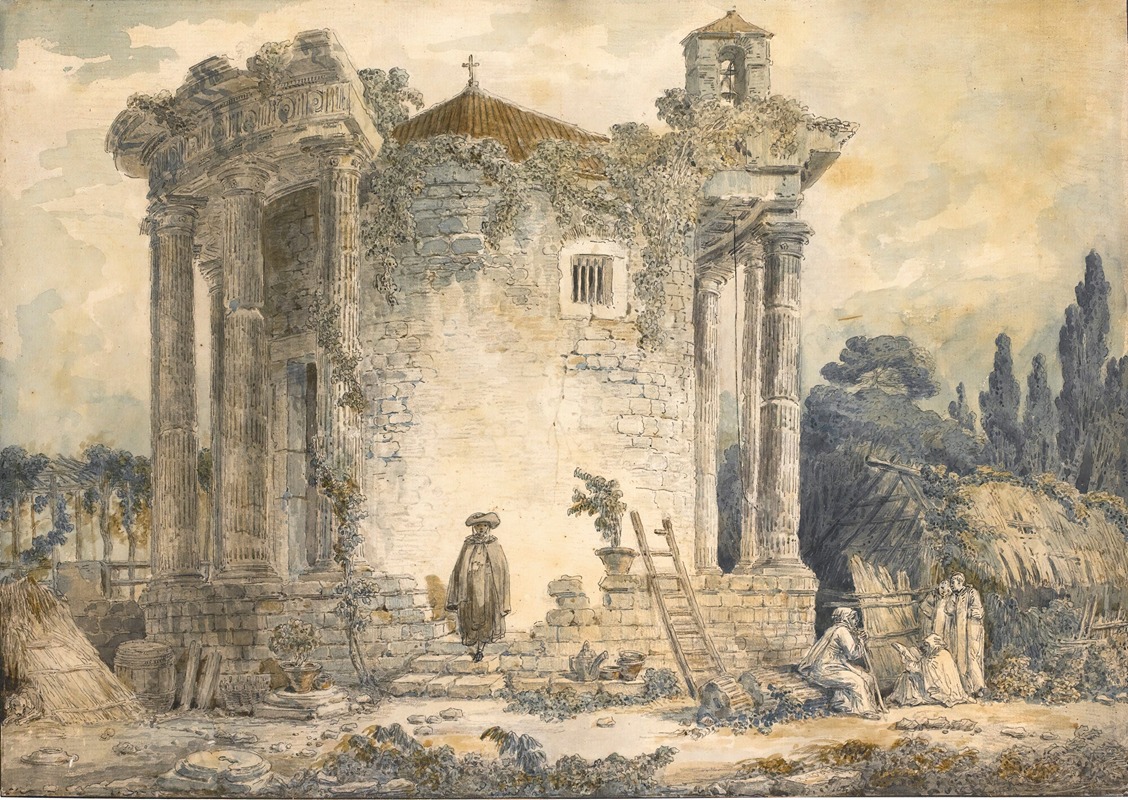
The Temple Of The Sibyl At Tivoli, A Man In A Cloak And Hat Standing On The Steps, A Group Of Monks To The Right
A hand-painted replica of Hubert Robert’s masterpiece The Temple Of The Sibyl At Tivoli, A Man In A Cloak And Hat Standing On The Steps, A Group Of Monks To The Right, meticulously crafted by professional artists to capture the true essence of the original. Each piece is created with museum-quality canvas and rare mineral pigments, carefully painted by experienced artists with delicate brushstrokes and rich, layered colors to perfectly recreate the texture of the original artwork. Unlike machine-printed reproductions, this hand-painted version brings the painting to life, infused with the artist’s emotions and skill in every stroke. Whether for personal collection or home decoration, it instantly elevates the artistic atmosphere of any space.
Hubert Robert, a prominent French painter of the 18th century, is renowned for his captivating landscapes and architectural paintings. One of his notable works is "The Temple of the Sibyl at Tivoli, A Man in a Cloak and Hat Standing on the Steps, A Group of Monks to the Right." This painting exemplifies Robert's fascination with classical ruins and his ability to blend historical architecture with lively human presence.
The painting depicts the Temple of the Sibyl, a Roman temple located in Tivoli, Italy. This temple, often associated with the Sibyl of Tibur, is an iconic example of ancient Roman architecture and has been a source of inspiration for many artists and architects throughout history. Hubert Robert's portrayal captures the temple's grandeur and its picturesque setting amidst the rugged landscape of Tivoli.
In the foreground of the painting, a man dressed in a cloak and hat stands on the steps of the temple. His presence adds a sense of scale and human interest to the scene, inviting viewers to imagine the historical and cultural significance of the site. To the right, a group of monks is depicted, further enhancing the narrative quality of the painting. The inclusion of these figures suggests a moment of contemplation or pilgrimage, common themes in Robert's work.
Robert's technique in this painting is characterized by his masterful use of light and shadow, which brings the architectural details of the temple to life. The play of light across the stone surfaces highlights the texture and age of the ruins, while the surrounding landscape is rendered with a soft, atmospheric quality. This combination of precise architectural detail and evocative landscape is a hallmark of Robert's style.
The painting reflects the 18th-century European fascination with classical antiquity, a period when the Grand Tour was popular among the elite. Artists like Hubert Robert were instrumental in capturing the romantic allure of ancient ruins, which were seen as symbols of the sublime and the passage of time. His works often evoke a sense of nostalgia and admiration for the achievements of past civilizations.
Hubert Robert's contribution to the genre of architectural painting and his influence on the neoclassical movement are significant. His ability to convey the beauty and mystery of ancient sites has left a lasting impact on the art world. "The Temple of the Sibyl at Tivoli" is a testament to his skill in merging historical architecture with narrative elements, creating a work that is both visually stunning and rich in historical context.
Overall, this painting is a fine example of Hubert Robert's artistic vision and his ability to capture the essence of classical ruins. Through his work, viewers are transported to a world where history and imagination intertwine, offering a glimpse into the past through the lens of 18th-century artistic sensibilities.






